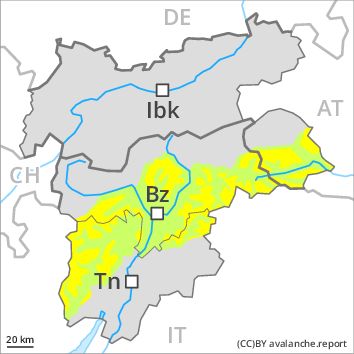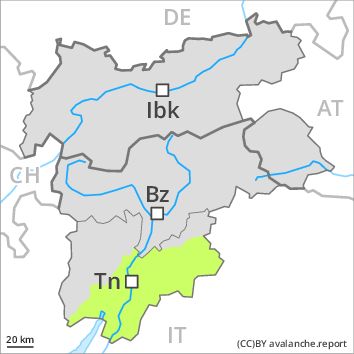Regions
Sexten Dolomites, Latemar, Western Deferegger Alps, Ulten Valley, Eastern Nonsberger Alps, Northern Dolomites of Fiemme, Gröden Dolomites, Southern Adamello, Eastern Deferegger Alps, Prags Dolomites, Sarntal Alps, Adamello - Presanella, Schober Mountains, Northern Brenta - Peller, Lienzer Dolomites, Western Nonsberg Alps, Southern Brenta, Fassa Valley, Sole, Pejo and Rabbi, Maddalene

Danger level
Avalanche Problem
Wind-drifted snow above 1800m, N-NE-E-SE-S-SW-W-NW

Fresh wind slabs.
The mostly shallow wind slabs of the last two days can be released easily. or in isolated cases naturally,. The avalanche prone locations are to be found in particular adjacent to ridgelines and in gullies and bowls in all aspects. They will increase with altitude. In the regions neighbouring those that are subject to danger level 3 (considerable) the avalanche danger is higher.
Snowpack
dp 6: cold, loose snow and wind
In some localities up to 10 cm of snow. fell. This applies in particular in the regions neighbouring those that are subject to danger level 3 (considerable). The sometimes storm force wind has transported the fresh and old snow significantly. In particular adjacent to ridgelines and in gullies and bowls brittle wind slabs formed. This applies in particular above approximately 1800 m.
Tendency
The danger of dry slab avalanches will decrease gradually.
